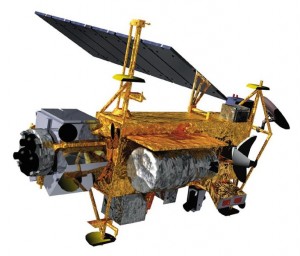Update (8.34 am AEST): I have just checked the visibilty updates for Australia for viewing the UARS satellite in our evening sky. Unfortunately the significant change in the satellites orbit due to solar heating of the upper atmosphere means these no longer exist. We now have to wait for updates from NASA regarding when the satellite will re-enter and hope it occurs over Australia. There are a number of daylight passes and I will be watching when I have the opportunity to see if it is visible. Watch this space (pun intended)!
Origional post: NASA has announced that recent solar activity has brought forward the likely re-entry date of the Upper Atmosphere Research Satellite to 24 September 2011 (plus or minus one day). The expected re-entry date was previously the end of this month or early October. The exact wording on the UARS site is ‘As of Sept. 15, 2011, the orbit of UARS was 143 mi by 158 mi (230 km by 255 km). Re-entry is expected Sept. 24, plus or minus a day’. The exact time won’t be known until shortly before reentry. My previous post about the UARS re-entry can be found here.
Keep in mind that the UARS satellite is visible in Australian skies over the next couple of nights. Information about how to get viewing information can be found here.

The increased solar activity has heated the upper atmosphere resulting in it expanding. This has increased atmospheric drag on the satellite shortening its life further.
you are looky to live in vast open space….! last info in Italy predict a possible reentry during a passage over the northern area of our country (alps + related 15 million inhabitant regions) between 21.30 and 22.15 of september, 23rd, i.e TODAY! Do you suggest to take precautions going downstairs, for example in the car box or cantine? Will heavy debrees eventually fall along a vertical line or still have an horizontal speed component (entering through a window…..?)
many thanks
francesco, Italy
Francesco,
Firstly, keep in mind that the risk is very low. The chances are very low of it hitting a particular spot on the Earth’s surface is very low. Secondly, there are no radioactive substances or explosive material on the satellite. Any damage caused by satellite debris landing (say on a house) would be limited to how much the piece of debris weighed and how fast it is going. That is not possible to predict.
Regards,
Paul Floyd.